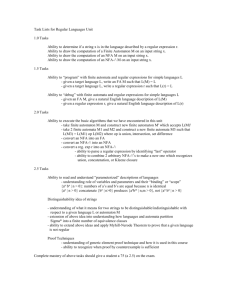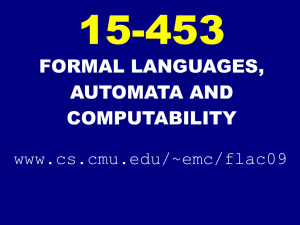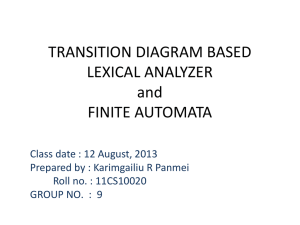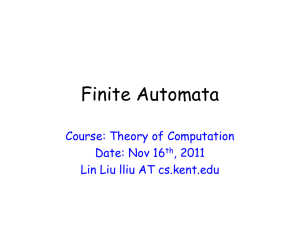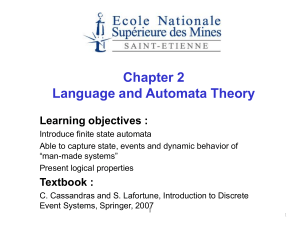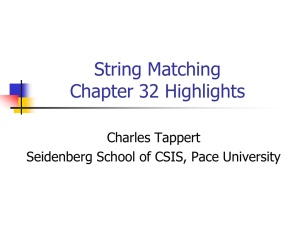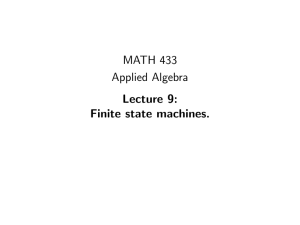CSC445: Theory of Computation, Spring 2013
advertisement
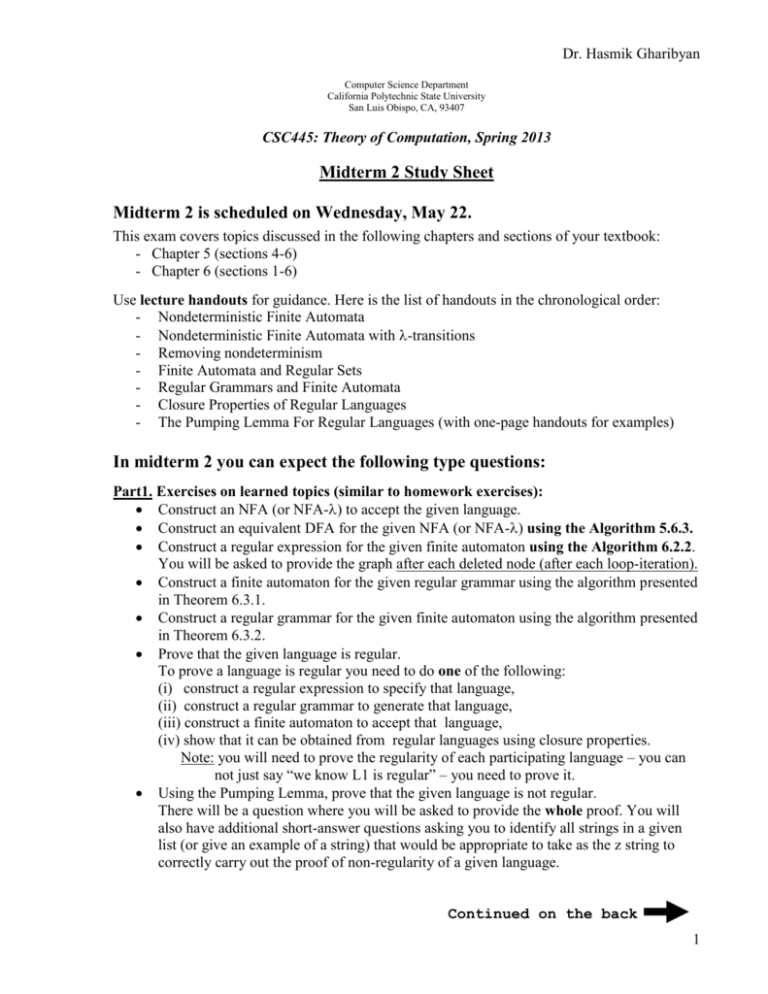
Dr. Hasmik Gharibyan Computer Science Department California Polytechnic State University San Luis Obispo, CA, 93407 CSC445: Theory of Computation, Spring 2013 Midterm 2 Study Sheet Midterm 2 is scheduled on Wednesday, May 22. This exam covers topics discussed in the following chapters and sections of your textbook: - Chapter 5 (sections 4-6) - Chapter 6 (sections 1-6) Use lecture handouts for guidance. Here is the list of handouts in the chronological order: - Nondeterministic Finite Automata - Nondeterministic Finite Automata with -transitions - Removing nondeterminism - Finite Automata and Regular Sets - Regular Grammars and Finite Automata - Closure Properties of Regular Languages - The Pumping Lemma For Regular Languages (with one-page handouts for examples) In midterm 2 you can expect the following type questions: Part1. Exercises on learned topics (similar to homework exercises): Construct an NFA (or NFA-) to accept the given language. Construct an equivalent DFA for the given NFA (or NFA-) using the Algorithm 5.6.3. Construct a regular expression for the given finite automaton using the Algorithm 6.2.2. You will be asked to provide the graph after each deleted node (after each loop-iteration). Construct a finite automaton for the given regular grammar using the algorithm presented in Theorem 6.3.1. Construct a regular grammar for the given finite automaton using the algorithm presented in Theorem 6.3.2. Prove that the given language is regular. To prove a language is regular you need to do one of the following: (i) construct a regular expression to specify that language, (ii) construct a regular grammar to generate that language, (iii) construct a finite automaton to accept that language, (iv) show that it can be obtained from regular languages using closure properties. Note: you will need to prove the regularity of each participating language – you can not just say “we know L1 is regular” – you need to prove it. Using the Pumping Lemma, prove that the given language is not regular. There will be a question where you will be asked to provide the whole proof. You will also have additional short-answer questions asking you to identify all strings in a given list (or give an example of a string) that would be appropriate to take as the z string to correctly carry out the proof of non-regularity of a given language. Continued on the back 1 Dr. Hasmik Gharibyan Part2. Short answer questions on learned concepts, definitions, theorems, results (similar to quiz questions posted on the course site: www.csc.calpoly.edu/~hghariby/CSC445 I expect you to know the following definitions, concepts, theorems, conclusions: Chapter 5: Nondeterministic finite automata (NFA and NFA-), -transitions, acceptance of a string, language, machine configuration, tracing of a computation, -closure, and t functions, Lemma 5.5.2, Theorem 5.5.3, Theorem 5.6.4. Chapter 6: Expression graphs (minimal expression graphs and regular expressions for each one’s language), the relationships between Regular Sets, Regular Grammars and Finite Automata. Theorem 6.2.3 (Kleene), Theorems 6.4.1-6.4.3 (closure properties), Theorem 6.6.3 (Pumping Lemma), Theorem 6.6.4, Corollary 6.6.5, Corollary 6.6.6. 2
